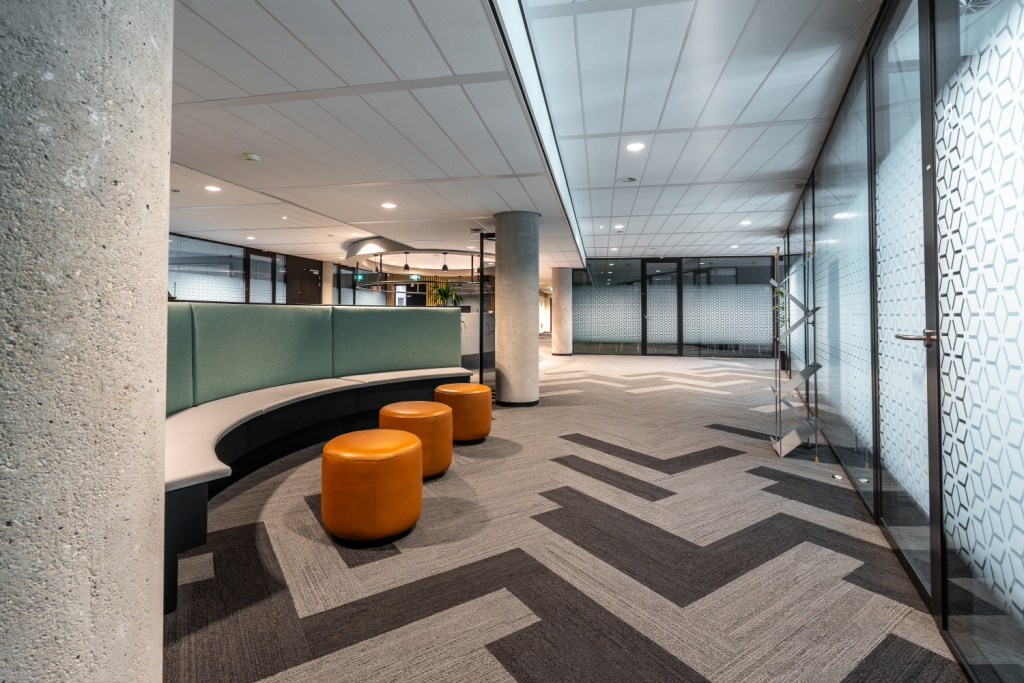The height of a ceiling is more than just a spatial consideration; it’s a pivotal factor influencing our perception and cognitive processes within a workspace. Building codes set minimum standards for ceiling height to ensure a quality living and working environment. However, the specific height often emerges from the interplay of various architectural elements, from material dimensions to the layout of stair steps. The height of 2.40 metres or 8 feet, with most doors measuring 2.10 metres or 7 feet, is the average ceiling height. Ceilings surpassing 2.70 metres are categorised as tall, and those exceeding 4.50 metres are considered double height.

Amid the trend of urban densification, many designers opt for minimal ceiling heights to trim construction costs. Conversely, older structures boast more generous ceilings, providing architects with a canvas for enhanced design flexibility. The question arises: How can modern architects leverage these spaces to their fullest potential?
Practical Applications of High and Low Ceilings
Research indicates a fascinating link between ceiling height and cognitive processes. High ceilings are catalysts for abstract thinking and creativity, fostering an environment where innovative ideas flourish. On the flip side, lower ceilings focus on concrete, detail-oriented thinking. While the preference for high ceilings over low ones is widely acknowledged, the nuanced impact on problem-solving approaches is less explored.
To understand this approach, consider various environments: opt for large rooms with high ceilings in creative endeavours like research and development, facilitating an environment for innovative thinking. In contrast, smaller rooms with lower ceilings provide the necessary focus for precision-centric tasks such as surgical operating rooms. The retail landscape strategically favours high ceilings for imaginative experiences like home remodelling stores and lower ceilings for task-oriented shopping like convenience stores. Even visitor engagement is influenced, with high ceilings in spaces like casinos prolonging on-site time and lower ceilings in places like fast-food restaurants discouraging loitering.

Benefits of High Ceilings in Office Design:
1. Enhanced Natural Light and Ventilation: Incorporating high ceilings into office design offers a dual benefit– facilitating larger windows, thereby maximising the influx of natural light. Research consistently underscores the positive impact of natural light on mental well-being, making this architectural choice a strategic investment in fostering a healthier and uplifting work environment. Beyond illumination, higher ceilings enhance airflow, promoting better ventilation, which is particularly crucial during summer. The air circulation within the workspace can be further optimised by installing taller doors and larger windows, ensuring a harmonious blend of aesthetic appeal and sustainability.
2. Vertical Illusion of Space: High ceilings create the perfect illusion of expansive space, a particularly valuable asset for smaller workspaces. When coupled with an open layout, they work harmoniously to transform a potentially cramped environment into a visually larger and more inviting one. This optical enlargement not only enhances the overall ambience but also provides practical benefits, offering the opportunity for increased storage solutions, such as the incorporation of additional shelves, and offering more places for the company to showcase its identity and ethos within the workspace.
3. Positive Impact on Employee Well-being: High ceilings serve as dynamic catalysts for fostering abstract thinking and creativity, creating a fertile ground where innovative ideas naturally thrive. Beyond the mental benefits, the physical aspects of this architectural choice contribute to a holistic well-being approach. Tall windows offer a panoramic view and good ventilation with natural light, a fundamental principle of biophilic design. The result is a rejuvenated and inspired workforce, creating a positive contrast to an environment that might otherwise be perceived as dull and demotivating.
4. Shaping the Perception of Prestige: High ceilings play a pivotal role in crafting an ambience of prestige within office spaces, providing a canvas for ornate embellishments in the form of grand lights, expansive furniture sets, and majestic doorways. The vertical expanse allows for the installation of elaborate lighting fixtures, contributing to an aura of opulence. Additionally, the increased wall height offers a prime showcase for sizable artworks, further elevating the aesthetic appeal and conveying a sense of sophistication. This architectural grandeur and artistic expression leave a lasting impression on employees and visitors alike.

The result?
All of the above points collectively result in a workspace that not only captivates clients and entices prospective employees but, most crucially, enhances the productivity and well-being of its existing workforce.
The thoughtful integration of architectural features, from high ceilings fostering creativity to the strategic use of natural light and ventilation, transforms the office into a dynamic and inviting environment.

Shared By: Sammeer Pakvasa,
Managing director and CEO- Eleganz Interiors.



